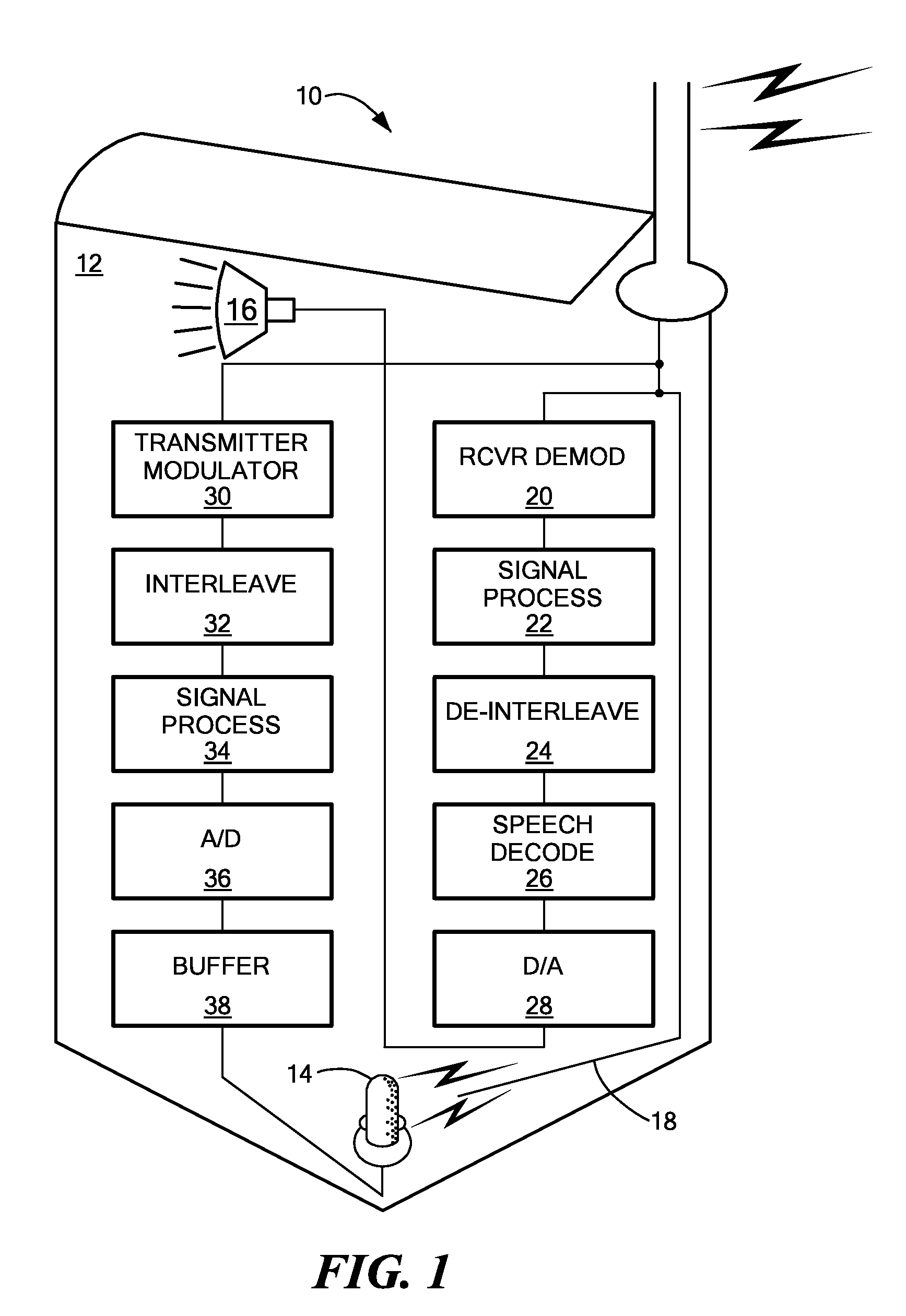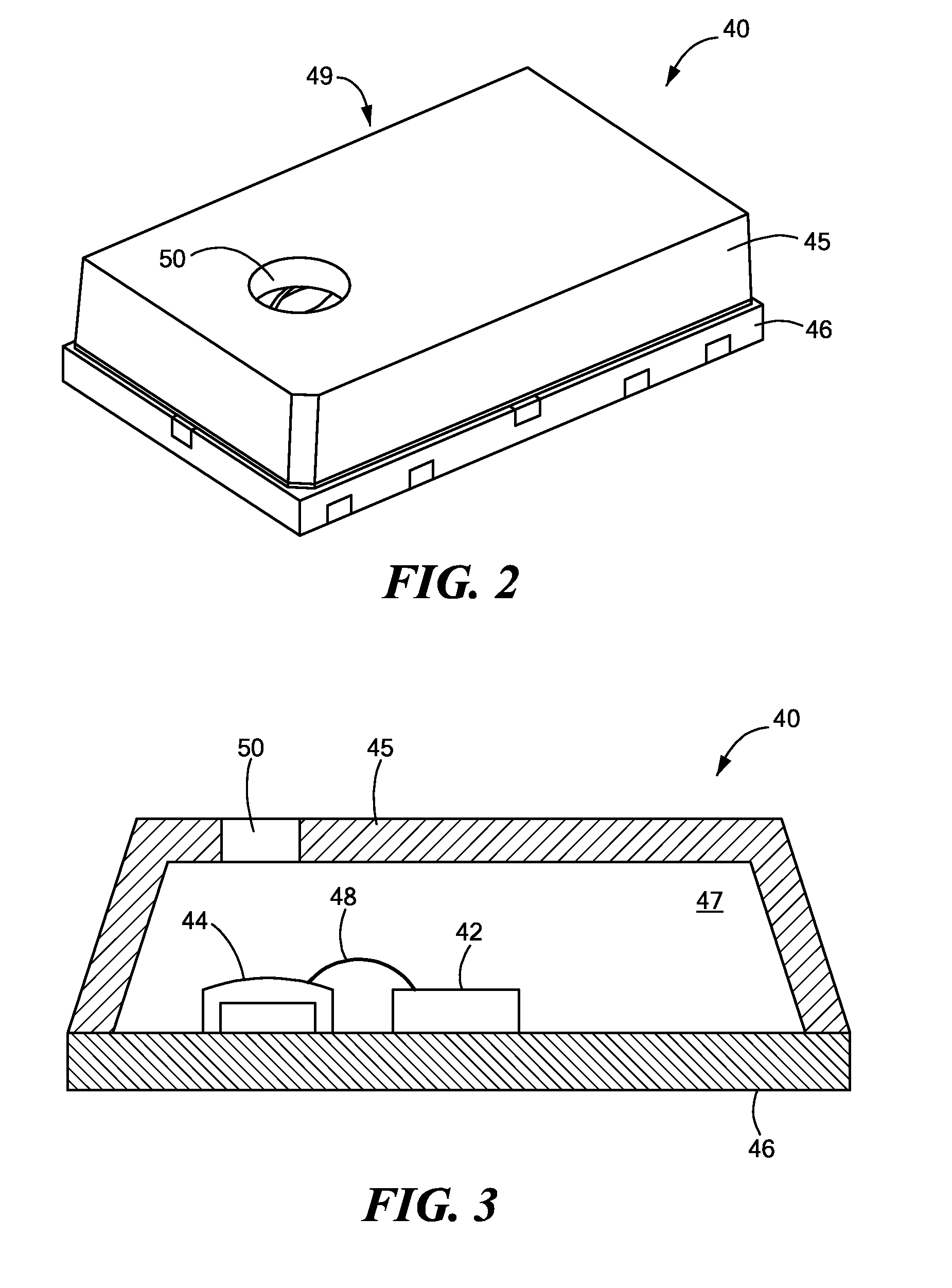Microphone Microchip Device with Internal Noise Suppression
a microchip device and microphone technology, applied in the field of microchip devices for microphone circuitry, can solve the problems of noise interference, adversely affecting the operation of the cellular telephone, and particularly troublesome pickup of noise signals at audio frequencies
- Summary
- Abstract
- Description
- Claims
- Application Information
AI Technical Summary
Benefits of technology
Problems solved by technology
Method used
Image
Examples
Embodiment Construction
[0013]As used herein, a “nonlinear circuit element” will mean any element that provides a nonlinear response to electrical signals. Such elements include, but are not limited to, diodes, bipolar junction transistors, metal-oxide semiconductor field effect transistors (“MOSFET”) etc.
[0014]In illustrative embodiments of the invention, a microchip in a voice communication device, such as a cellular telephone, receives and processes voice signals from a microphone. The microchip is configured to internally attenuate RF carrier noise signals that may be induced in circuit elements of the microchip. Such noise signals are generated by transceiver circuitry that transmits and receives voice signals using a modulated RF carrier signal. A filter is provided at microchip ports through which such noise can enter the microchip. The filter attenuates RF carrier noise while allowing audio signals to pass substantially unaffected. Thus, modulated RF carrier noise signals are substantially suppress...
PUM
 Login to View More
Login to View More Abstract
Description
Claims
Application Information
 Login to View More
Login to View More - R&D
- Intellectual Property
- Life Sciences
- Materials
- Tech Scout
- Unparalleled Data Quality
- Higher Quality Content
- 60% Fewer Hallucinations
Browse by: Latest US Patents, China's latest patents, Technical Efficacy Thesaurus, Application Domain, Technology Topic, Popular Technical Reports.
© 2025 PatSnap. All rights reserved.Legal|Privacy policy|Modern Slavery Act Transparency Statement|Sitemap|About US| Contact US: help@patsnap.com



